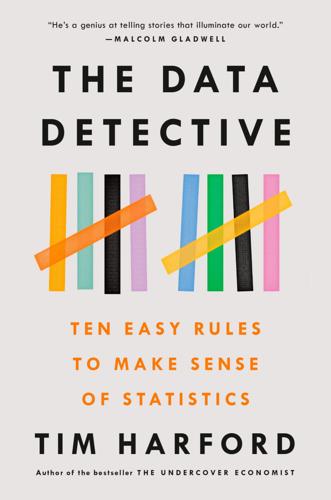
The Data Detective: Ten Easy Rules to Make Sense of Statistics
by
Tim Harford
Published 2 Feb 2021
For more information about the life and statistical contribution of Florence Nightingale, see Mark Bostridge, Florence Nightingale: The Woman and Her Legend (New York: Penguin, 2009); Lynn McDonald, ed., The Collected Works of Florence Nightingale (Waterloo, ON: Wilfrid Laurier University Press, 2009–10), and “Florence Nightingale: Passionate Statistician,” Journal of Holistic Nursing 28, no. 1 (March 2010); Hugh Small, “Did Nightingale’s ‘Rose Diagram’ Save Millions of Lives?,” seminar paper, Royal Statistical Society, October 7, 2010; I. Bernard Cohen, “Florence Nightingale,” Scientific American 250, no. 3 (1984), 128–37, JSTOR, www.jstor.org/stable/24969329; Eileen Magnello, “Florence Nightingale: A Victorian Statistician,” Mathematics in School, May 2010, and “The Statistical Thinking and Ideas of Florence Nightingale and Victorian Politicians,” Radical Statistics, issue 102. 2.
…
Brian Brettschneider, “Lessons from Posting a Fake Map,” Forbes.com, November 23, 2018, https://www.forbes.com/sites/brianbrettschneider/2018/11/23/lessons-from-posting-a-fake-map/#5138b31959ec. 11. Florence Nightingale, “Notes on the Health of the British Army,” in McDonald, The Collected Works of Florence Nightingale, vol. 14, 37. 12. See McDonald, The Collected Works of Florence Nightingale, vol. 14, 551–52. 13. Letter from Florence Nightingale to Sidney Herbert, August 19, 1857. 14. Alberto Cairo, How Charts Lie (New York: W. W. Norton, 2019), 47. 15. William Cleveland, The Elements of Graphing Data (Monterey, CA: Wadsworth, 1994); Gene Zelazny, Say It with Charts (New York: McGraw-Hill, 1985); Naomi Robbins, Creating More Effective Graphs (Hoboken, NJ: Wiley, 2005). 16.
…
Bernard Cohen, “Florence Nightingale,” Scientific American 250, no. 3 (1984), 128–37, JSTOR, www.jstor.org/stable/24969329; Eileen Magnello, “Florence Nightingale: A Victorian Statistician,” Mathematics in School, May 2010, and “The Statistical Thinking and Ideas of Florence Nightingale and Victorian Politicians,” Radical Statistics, issue 102. 2. Draft from John Sutherland (presumed on behalf of Florence Nightingale) to William Farr, March 1861. 3. These quotes from Nightingale are in Marion Diamond and Mervyn Stone, “Nightingale on Quetelet,” Journal of the Royal Statistical Society 1 (1981), 66–79. 4. Alberto Cairo, The Functional Art (San Francisco: Peachpit Press, 2013). 5.
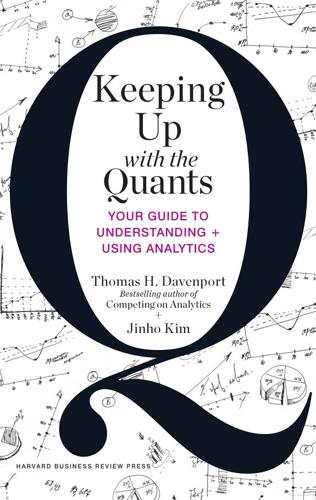
Keeping Up With the Quants: Your Guide to Understanding and Using Analytics
by
Thomas H. Davenport
and
Jinho Kim
Published 10 Jun 2013
Historical Examples of Communicating Results, Good and Bad Presentation of quantitative results is a technique that has been used for a long time, and, as now, can successfully convince the intended audience or completely undermine the importance of those results. Let’s look at an example of each. Florence Nightingale: A Good Example of Communicating Results Florence Nightingale is widely known as the founder of the profession of nursing and a reformer of hospital sanitation methods, but she was also a very early user of quantitative methods. When Nightingale and thirty-eight volunteer nurses were sent in October 1854 to a British military hospital in Turkey during the Crimean War, she found terrible conditions in a makeshift hospital.
…
Xiao-Li Meng, “Statistics: Your Chance for Happiness (or Misery),” course description, http://www.stat.harvard.edu/Academics/invitation_chair_txt.html. 3. David Schmitt, “Tell a Story,” June 27, 2012, http://www.allanalytics.com/ author.asp?id=2092&doc_id=246428. 4. I. Bernard Cohen, The Triumph of Numbers: How Counting Shaped Modern Life (New York: W.W. Norton, 2006), chapter 9; “Florence Nightingale,” Wikipedia, http://en.wikipedia.org/wiki/Florence_Nightingale; P. Nuttall, “The Passionate Statistician,” Nursing Times 28 (1983): 25–27. 5. Gregor Mendel, “Experiments in Plant Hybridization,” http://www.mendelweb.org/; “Gregor Mendel,” Wikipedia, http://en.wikipedia.org/wiki/Gregor_Mendel; Seung Yon Rhee, Gregor Mendel, Access Excellence, http://www.accessexcellence.org/RC/AB/BC/Gregor_Mendel.php; “Mendel’s Genetics,” anthro.palomar.edu/mendel/mendel_1.htm; David Paterson, “Gregor Mendel,” www .zephyrus.co.uk/gregormendel.html; “Rocky Road: Gregor Mendel,” Strange Science, www.strangescience.net/mendel.htm; Wolf-Ekkehard Lönnig, “Johann Gregor Mendel: Why His Discoveries Were Ignored for 35 Years,” www.weloennig .de/mendel02.htm; “Gregor Mendel and the Scientific Milieu of His Discovery,” www.2iceshs.cyfronet.pl/2ICESHS_Proceedings/Chapter_10/R-2_Sekerak.pdf; “Mendelian Inheritance,” Wikipedia, http://en.wikipedia.org/wiki/Mendelian_ inheritance. 6.
…
Eventually, death rates were sharply reduced, as shown in the data Nightingale systematically collected. The mortality rate continued to fall. When she returned to England in June of 1856 after the Crimean War ended, she found herself a celebrity and praised as a heroine. FIGURE 4-1 * * * Florence Nightingale’s diagram of the causes of mortality in the “Army in the East” The Areas of the blue, red, & black wedges are each measured from the centre as the common vertex The blue wedges measured from the centre of the circle represent area for area the deaths from Preventible or Mitigable Zymotic Diseases, the red wedges measured from the centre the deaths from wounds, & the black wedges measured from the centre the deaths from all other causes The black line across the red triangle in Nov 1854 marks the boundary of the deaths from all other causes during the month In October 1854, & April 1855, the black area coincides with the red, in January & February 1856, the blue coincides with the black The entire areas may be compared by following the blue, the red, & the black lines enclosing them * * * Nightingale became a Fellow of the Royal Statistical Society in 1859—the first woman to become a member—and an honorary member of the American Statistical Association in 1874.
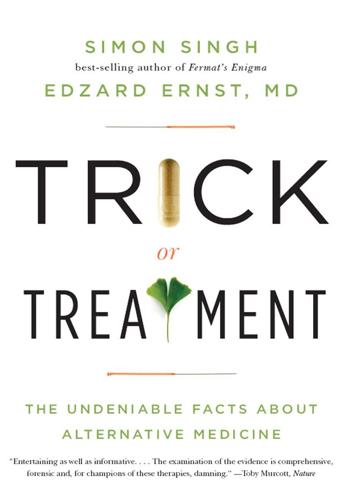
Trick or Treatment: The Undeniable Facts About Alternative Medicine
by
Edzard Ernst
and
Simon Singh
Published 17 Aug 2008
Bloodletting, on the other hand, was very much a standard treatment, but the establishment eventually had to reject its own practice because it was undermined by evidence from trials. There is one episode from the history of medicine that illustrates particularly well how an evidence-based approach forces the medical establishment to accept the conclusions that emerge when medicine is put to the test. Florence Nightingale, the Lady with the Lamp, was a woman with very little reputation, but she still managed to win a bitter argument against the male-dominated medical establishment by arming herself with solid, irrefutable data. Indeed, she can be seen as one of the earliest advocates of evidence-based medicine, and she successfully used it to transform Victorian healthcare.
…
Florence and her sister were born during an extended and very productive two-year-long Italian honeymoon taken by their parents William and Frances Nightingale. Florence’s older sister was born in 1819 and named Parthenope after the city of her birth – Parthenope being the Greek name for Naples. Then Florence was born in the spring of 1820, and she too was named after the city of her birth. It was expected that Florence Nightingale would grow up to live the life of a privileged English Victorian lady, but as a teenager she regularly claimed to hear God’s voice guiding her. Hence, it seems that her desire to become a nurse was the result of a ‘divine calling’. This distressed her parents, because nurses were generally viewed as being poorly educated, promiscuous and often drunk, but these were exactly the prejudices that Florence was determined to crush.
…
In due course, Nightingale’s statistical studies spearheaded a revolution in army hospitals, because the Royal Commission’s report led to the establishment of an Army Medical School and a system of collecting medical records. In turn, this resulted in a careful monitoring of which conditions and treatments did and did not benefit patients. Today, Florence Nightingale is best known as the founder of modern nursing, having established a curriculum and training college for nurses. However, it can be argued that her lifelong campaigning for health reforms based on statistical evidence had an even more significant impact on healthcare. She was elected the first female member of the Royal Statistical Society in 1858, and went on to become an honorary member of the American Statistical Association.
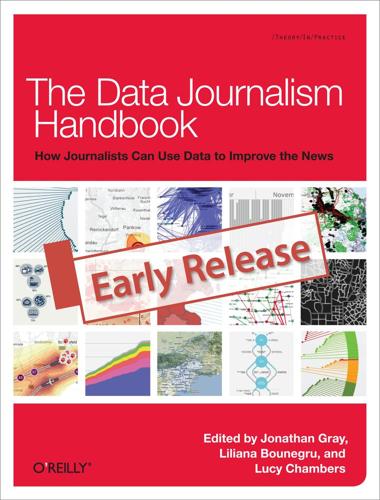
The Data Journalism Handbook
by
Jonathan Gray
,
Lucy Chambers
and
Liliana Bounegru
Published 9 May 2012
Data journalism in the Guardian in 1821 (the Guardian) Another early example in Europe is Florence Nightingale and her key report, “Mortality of the British Army”, published in 1858. In her report to Parliament, she used graphics to advocate improvements in health services for the British army. The most famous is her “coxcomb,” a spiral of sections each representing deaths per month, which highlighted that the vast majority of deaths were from preventable diseases rather than bullets. Figure 1-10. Mortality of the British army by Florence Nightingale (image from Wikipedia) Data Journalism and Computer-Assisted Reporting At the moment there is a “continuity and change” debate going on around the label “data journalism” and its relationship with previous journalistic practices that employ computational techniques to analyze datasets.
…
He singlehandedly introduced the world to many of the same charts and graphs we still use today. In his 1786 book, Commercial and Political Atlas, Playfair introduced the bar chart to clearly show the import and export quantities of Scotland in a new and visual way. He then went on to popularize the dreaded pie chart in his 1801 book Statistical Breviary. The need for these new forms of charts and graphs came out of commerce, but as time passed, others appeared and were used to save lives. In 1854 John Snow created his now famous “Cholera Map of London” by adding a small black bar over each address where an incident was reported.
…
Note Tableau is designed for PCs, although a Mac version is in the works. Use a mirror such as parallels to make it work. Google Spreadsheet Charts You can access this tool at http://www.google.com/google-d-s/spreadsheets/. Figure 6-21. UK government spending and taxation (the Guardian) After something simple (like a bar or line chart, or a pie chart), you’ll find that Google spreadsheets (which you create from the documents bit of your Google account) can create some pretty nice charts—including the animated bubbles used by Hans Rosling’s Gapminder. Unlike the charts API, you don’t need to worry about code; it’s pretty similar to making a chart in Excel, in that you highlight the data and click the chart widget.
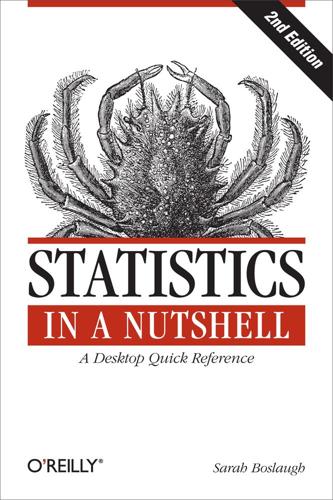
Statistics in a Nutshell
by
Sarah Boslaugh
Published 10 Nov 2012
So you must make your own decision based on context and convention; I will present the same BMI information in pie chart form (Figure 4-30), and you may be the judge of whether this is a useful way to present the data. Note that this is a single pie chart, showing one year of data, but other options are available, including side-by-side charts (to facilitate comparison of the proportions of different groups) and exploded sections (to show a more detailed breakdown of categories within a segment). Figure 4-30. Pie chart showing BMI distribution for freshmen entering in 2005 Florence Nightingale and Statistical Graphics Most people are at least vaguely familiar with Florence Nightingale’s role in establishing nursing as a profession and with her heroic efforts to improve hygiene and the quality of nursing provided to British soldiers during the Crimean War.
…
It is immediately clear that the proportion of underweight students has declined, and the proportion of overweight and obese students has increased over time. Pie Charts The familiar pie chart presents data in a manner similar to the stacked bar chart: it shows graphically what proportion each part occupies of the whole. Pie charts, like stacked bar charts, are most useful when there are only a few categories of information and the differences among those categories are fairly large. Many people have particularly strong opinions about pie charts, and although pie charts are still commonly used in some fields, they have also been aggressively denounced in others as uninformative at best and potentially misleading at worst.
…
Pie chart showing BMI distribution for freshmen entering in 2005 Florence Nightingale and Statistical Graphics Most people are at least vaguely familiar with Florence Nightingale’s role in establishing nursing as a profession and with her heroic efforts to improve hygiene and the quality of nursing provided to British soldiers during the Crimean War. Fewer are aware of her contributions to statistical graphics, including her effective use of graphs and charts to communicate medical information. Nightingale also developed a new type of graph, the polar area diagram (which she called a coxcomb chart and others have termed a Nightingale rose diagram), to display comparative information such as the causes of death (from wounds received in battle, disease, and other causes) each month for British soldiers.
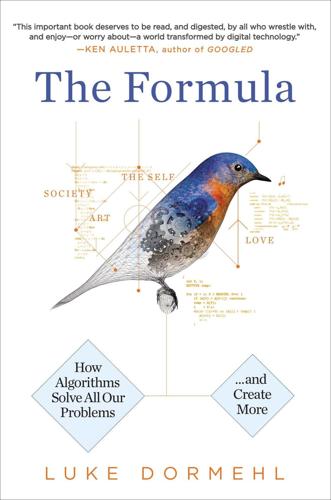
The Formula: How Algorithms Solve All Our Problems-And Create More
by
Luke Dormehl
Published 4 Nov 2014
The Westminster Review—an English magazine founded by Utilitarians John Stuart Mill and Jeremy Bentham—devoted a particularly large amount of space to Guerry’s book, which it praised for being of “substantial interest and importance.” Charles Darwin read Quetelet’s work, as did Fyodor Dostoyevsky (twice), while no less a social reformer than Florence Nightingale based her statistical methods upon his own.13 Nightingale later gushingly credited Quetelet’s findings with “teaching us . . . the laws by which our Moral Progress is to be attained.”14 In all, Guerry and Quetelet’s work showed that human beings were beginning to be understood—not as free-willed, self-determining creatures able to do anything that they wanted, but as beings whose actions were determined by biological and cultural factors.
…
The Taming of Chance (Cambridge, UK; New York: Cambridge University Press, 1990). 12 Rafter, Nicole. The Origins of Criminology: A Reader (New York: Routledge, 2009). 13 Mlodinow, Leonard. The Drunkard’s Walk: How Randomness Rules Our Lives (New York: Pantheon Books, 2008). 14 Belt, Elmer, and Louise Darling. Elmer Belt Florence Nightingale Collection (San Francisco: Internet Archive, 2009). 15 Danzigera, Shai, Jonathan Levav and Liora Avnaim-Pesso. “Extraneous Factors in Judicial Decisions.” PNAS, vol. 108, no. 17, April 26, 2011. pnas.org/content/108/17/6889.full. 16 Markoff, John. “Armies of Expensive Lawyers, Replaced by Cheaper Software.”
…
Giving it the name Bedpost, and the tagline “Ever wonder how often you get busy?,” the app advises users to “simply log in after every time [they] have sex and fill out a few simple fields. Pretty soon, you’ll have a rolling history of your sex life on which to reflect.”31 This mass of data can be visualized in a variety of forms—including pie charts and scatter plots—with heat maps showing different intensities of color based on the quantity and quality of sex a particular user is having. “The amount of data you can attach to sexual activity is uncapped,” Conboy says. “For instance, if you’re on your phone, there is no reason you can’t record the GPS data.